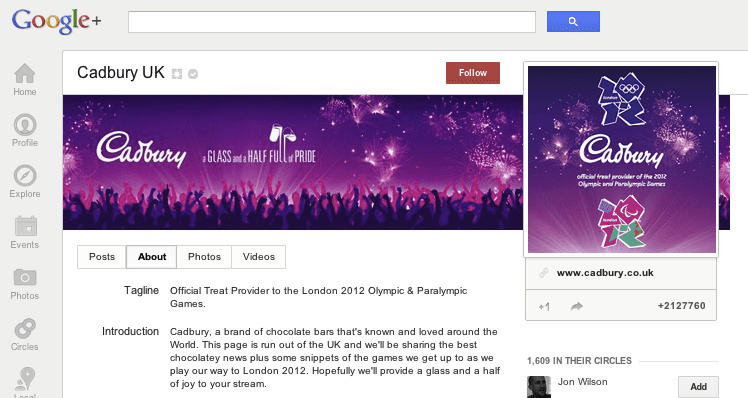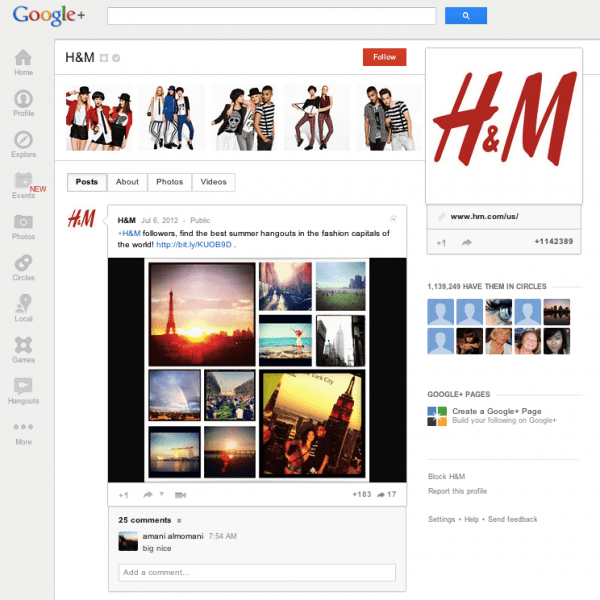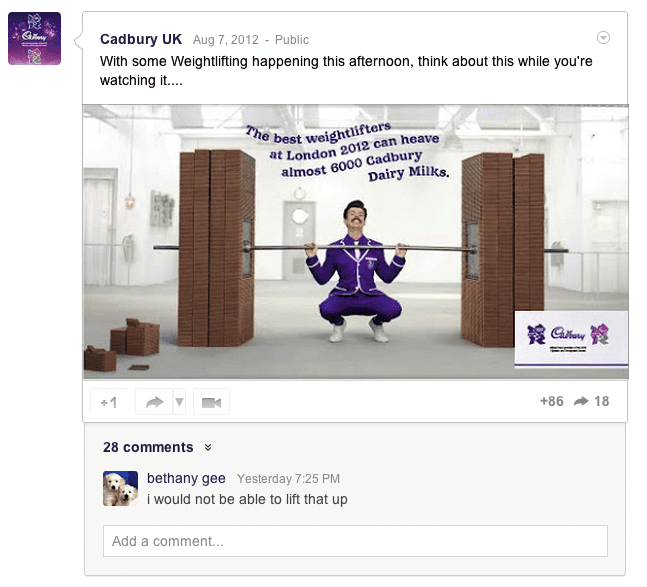Google+ best practice tips from Cadbury and H&M
Although brand adoption of Google+ is way behind other social networks, notably Facebook and Twitter, some businesses have jumped in and are making waves to stir up interest, engagement and interaction with their fans on Google+.
Confectioner Cadbury UK (see Google+ case study) and clothing brand H&M (see the Smart Insights details of H&M Google+ case study) are leading the way with their Google+ pages and are utlising the network to great effect.

But what is the "secret to their success"? Here are five best practice Google+ tips from two of the network’s leading lights:
Know your audience
Before jumping into Google+ it’s important to have a good idea of your customers and audience beforehand. Every social network is different and each has its own idiosyncrasies, so ensure that you build a platform that connects with your customers.
One way to begin gaining insight about your audience is to listen out for what people are saying about your brand, your products and the wider industry as a whole. What are people talking about? Is there a discussion already taking place that you can tap into?
To start listening, start searching in Google+. Make use of keywords and hashtags to see what’s being said and what’s trending. Cadbury actively listens to feedback from users and proactively engages in debate and discussion.
Jerry Daykin, Social Media Community Manager at Cadbury, explains how the team got
started.
“We did searches on Google+ for quite a while before our pages were launched and every day we saw people were talking about Cadbury and chocolate and the Olympics. So there was already a platform where conversations relevant to us were happening; we were just able to step in and be a part of them in a positive way".
Have a strategy
As with brand activity on any social network, the key to success is to have a clear strategy as to how the network will be used.
H&M’s Google+ strategy is to take advantage of the visual nature of Google+ to offer big, bold photography to inspire users and ignite discussion. H&M’s followers are very engaged with fashion and H&M use their brand page to lead discussion around this area.

Cadbury’s Google+ strategy is to connect with their customers and build a community of brand advocates. By regularly sharing stories, pictures and videos, Cadbury have been able to engage their followers around their product ideas and have been able to launch product launches exclusive to Google+: this is their online value proposition for this channel. Jerry Daykin says:
“We’ve really tried to do things that are unique to Google+ Cadbury has been careful to give their followers a reason to come to their Google+ page by sharing exclusive content they can’t find anywhere else. For example, special edition Google+ chocolate bars were made to feature on the page and they even sculpted a chocolate version of their Google+ page".
Build a community
One of the things Cadbury has done so well is to mobilise a strong community around the brand and its products. They haven’t just built up a group of followers for the sake of it. Instead, they’re using posts to tap into an engaged community that can respond to questions and ideas from the Cadbury team e.g. the exclusive product launches and currently linked to the Olympics and offline media related to this:

Cadbury has also exploited Google+’s unique functionality. Circles...
Cadbury uses Circles to give followers specific, tailored content that they want as well as using them to engage in specific conversations with small groups on the page. They’ve actively asked people what Circle they’d like to be in and added them individually.
This process, whilst time-consuming, is good for Cadbury as it gives them the opportunity to get to know their customers better and segment them accordingly.
Be visual
Google+ is big on pictures and brands can use this to their advantage. The ‘What's Hot' section on Google+ is dominated by photography and visual topics and it’s clear that great imagery cuts through and engages Google+ users.
H&M integrates their Instagram activity (the photo-sharing app recently bought by Facebook for $1 billion!) into their Google+ page to promote their work and consistently use photography to interact with fans around new product launches, fashion ideas and surveys.
Measure
With any kind of marketing activity it is of course essential to monitor, track and measure performance. And a brand’s presence on Google+ is no different.
Whilst Google+ does not offer a bespoke analytics package, Ripples can give brands an indication of what type of content is being shared and by whom. As of course, +1s, re-shares and comments can also be used as indicators of what content is working best for users.
Brands can also use a range of link shorteners and third- party Google+ tools such as Zoomsphere to track growth, click-through rate and engagement with users. The benefit of using public tools such as these is that companies can also keep an eye on competitors efforts, too!









